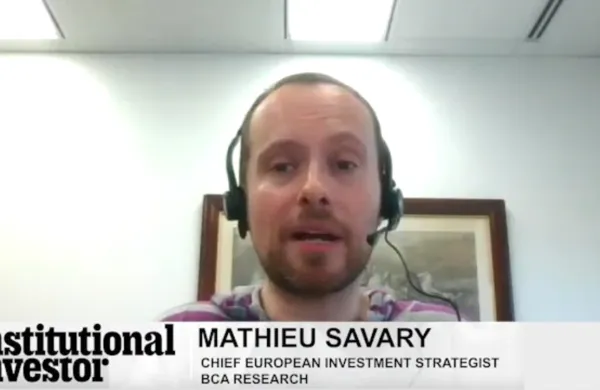Amid Thursday’s rejoicing in financial markets after the European Central Bank (ECB) promised potentially unlimited purchases of euro zone debt, few people noticed the specter at the feast: the ECB’s new and distinctly gloomy forecast for the euro zone economy.
The yields on Spanish and Italian bonds fell sharply, with euro zone equities surging higher, after ECB president Mario Draghi laid out plans to buy the short-term bonds of troubled member states deemed at risk of falling out of the euro zone.
The new “Outright Monetary Transaction” (OMT) program, which will cover bonds of up to three years’ maturity, aims “to address severe distortions in government bond markets” and, “in particular, unfounded fears on the part of investors of the reversibility of the euro.” Euro reversibility refers to the break-up of the euro zone.
This means buying as many bonds as are necessary to eliminate the premium that institutional investors demand for the government bonds of the more troubled euro zone member states — demanded out of fear that the euro zone breaks up and they find the bonds redenominated in weaker currencies.
The ECB has revealed no target rates for this program — such as buying Spanish two-years if they rise above 3 percent, for example, on the grounds that any rate above this reflects the “euro reversibility” which Draghi is combating, rather than normal default risk.
Moreover, Draghi emphasized that any buying under the new program was subject to “strict and effective conditionality” by euro zone institutions. He will even, as an extra precaution to prevent shirking, seek to enlist the International Monetary Fund as a monitor of compliance. Agreeing on the terms of all of this for any given country could take months — by which stage markets may well have pushed up the yields on the euro zone state in trouble to stratospheric levels. This suggests that the OMT will give countries a breathing space, but perhaps this will come only long after they have already started hyperventilating.
The benefits of the OMT are, therefore, ambiguous. The ECB’s new forecast for the economy was, however, unambiguously bad.
Its June forecast indicated either a fall or a modest rise in euro zone output this year and at worst zero growth next year. However, the new estimate expects a modest fall in output at best for 2012, and a possible fall for 2013 — though the midpoint of next year's forecast is 0.5 percent. Draghi added that the risks to the economic outlook were “on the downside”, because of “the potential spillover to the euro area real economy” from the currency union’s debt crisis.
The new, gloomier prognosis has cast the very first cloud over the prospects of the brand-new OMT, since weak economic growth or worse will make it harder for member states to meet whatever tough conditions are imposed in return for bond buying.
Draghi gave a flavor of what those conditions are likely to be at the press conference, saying that “in order to restore confidence”, euro zone policymakers “need to push ahead with great determination” with “fiscal consolidation” and “structural reforms to enhance competitiveness.” This includes cutting budget deficits, and reforms to make the labor market more flexible — an issue raised frequently by Draghi.
Jennifer McKeown of Capital Economics, an independent macroeconomic consultancy, said, “The Bank is still not prepared to do governments’ work for them, and questions remain over whether they are prepared to do what is required of them.”
Troubled euro zone states will certainly think twice before taking up Draghi’s offer: Trimming a fiscal deficit is notoriously hard against a background of declining output, because it tends to cut output still further. This creates a vicious circle, where government spending has to be reduced more as well, to meet the likely drop in tax revenue that usually accompanies falling gross domestic product.
Structural reforms are also harder to implement when output is shrinking — partly because, as shown by the unpopularity of successive administrations in Greece and Spain, a dire economy reduces trust in governments and in whatever policies they are trying to implement. Moreover, voters tend to blame structural reforms for the decline in the economy — and in the short term, they may be partly right. The creation of more flexible labor markets tends to boost employment in the long term, since if people are easier to fire, employers are less reluctant to hire. However, during economic downturns employers may complete the firing step, but without moving on to the hiring until the outlook improves.
The nightmare scenario is not that the ECB will refuse to buy the bonds of a country in trouble. Nor is it that the country will refuse to implement reforms in return. It is, rather, that the country starts down the road of reform in return for ECB aid and then finds itself unable to do as much as it has promised the ECB, either because its output is collapsing or because its electorate will not play ball. At that point the ECB either pulls the plug on its market assistance — plunging the affected member state’s bond market into a far worse crisis than before — or loses its credibility as a strict policeman of economic and fiscal prudence.
Despite these potential problems, however, the market responded enthusiastically to the new ECB program. The yield on Spanish two-years fell 13 basis points (bp) to 2.97 percent, with 10-year rates plummeting 36bp to 6.06 percent. The Eurofirst 300 index of euro zone equities ended the day 2.4 percent higher at 1,105.






